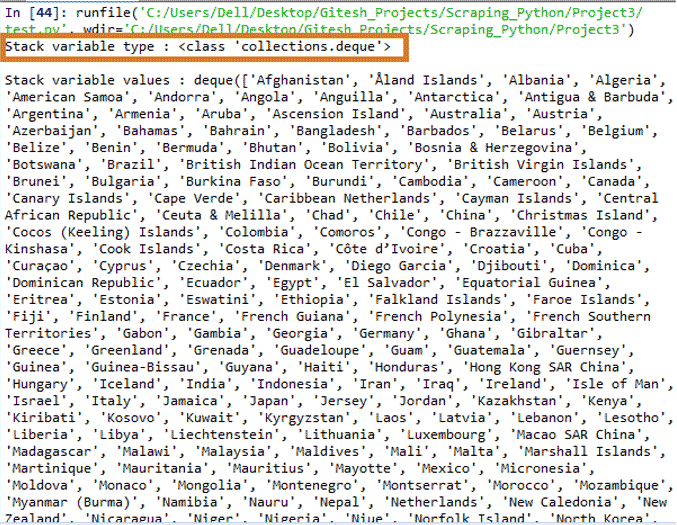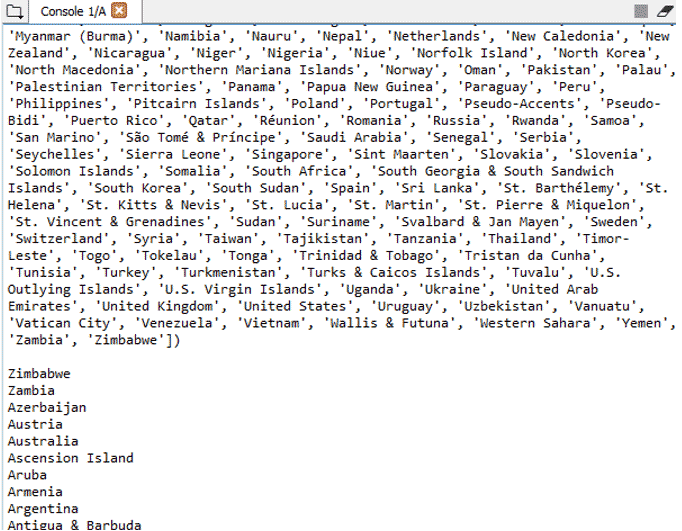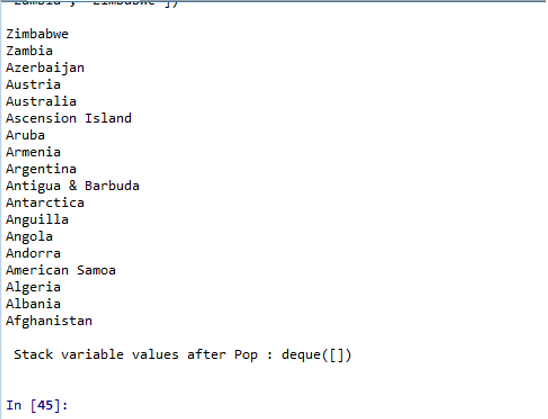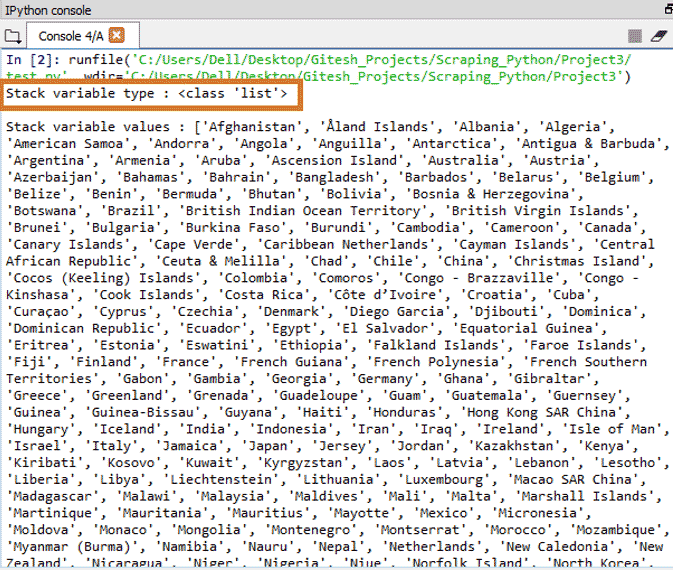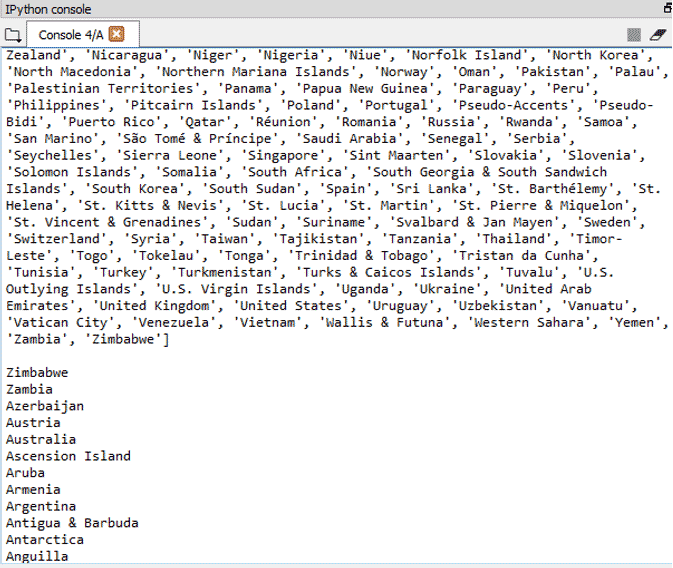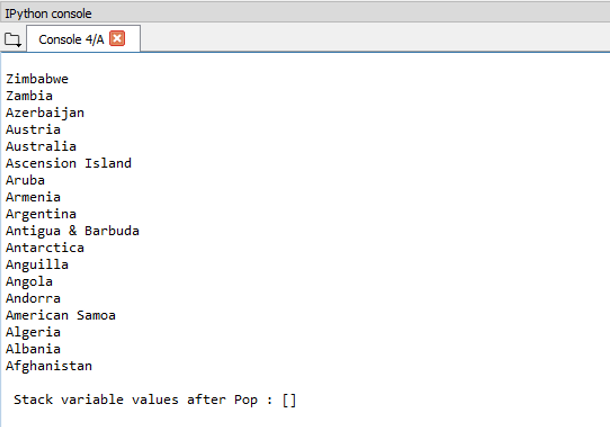Updated March 18, 2023
Introduction to Stack in Python
Python Stack is generally a data structure that operates on the last in and first out principle. It is an abstract data type. A few frequent examples of stack structure is a deck of cards. Just like its example, even in the software arena, Python Stack applies the same set of protocols. This means all data operations can be carried out only on the last in first out principle. At a specific tip of instance, only the pinnacle element of the Python Stack can be accessed.
Key Characteristics of the Stack in Python
- The key ideology of stack is it works on the last in first out principle.
- The push and pop operations are used for inserting and deleting an element from a stack.
- Some key examples of the stack are text parsing and conversion of expression.
Two Ways Stack can be Implemented
The three major ways in which a stack can be implemented is as below:
- Implement a stack using a collection
- Implement a stack using a list
1. Implement a stack using a collection
Collections are data types that are used to store collections of data. The stack data structure could be applied to practice in python programming in a collection using the deque class. The deque class basically operates in the LIFO order.
The below example depicts the stack operations using collections.:
Code:
from country_list import countries_for_language
from collections import deque
# extract all the values of the countries
countries_dict = dict(countries_for_language('en'))
country_values = countries_dict.values()
#Add all the country names to a stack
Country_stack_variable = deque()
for i in country_values:
Country_stack_variable.append(i)
print('Stack variable type :', type(Country_stack_variable),'\n')
print('Stack variable values :', Country_stack_variable ,'\n')
while Country_stack_variable:
country_temp = Country_stack_variable.pop()
if country_temp[0] == 'A':
print(country_temp)
if country_temp[0] == 'Z':
print(country_temp)
print('\n Stack variable values after Pop :', Country_stack_variable ,'\n')
Output :
Explanation:
- The above program uses a collection data type for preparing the stack. This process involves importing the deque class into the collection library. Here the ‘ country_list ‘ import is used for pulling out the catalog of all the countries. All country values are extracted into a dictionary variable because the country library extract is of a dict format where the key is a notation of the alphabet under which the country falls, and the value is the actual country name.
- For achieving the stacking functionality, a deque object is created. this is of the type deque. Every element in the country class is filled into this object using a for a loop. this for loop constructs the stack functionality with all the inputs piled up in ascending order for elucidating that this data element works exactly like a stack.
- The pop operation is applied. Here every element in the stack is popped and printed using the pop() function. We could notice that every pop() prints the newest country name in the console, which starts with the alphabetical notation ‘z’ and prints the alphabetical notation ‘a’ as the last set of elements.
2. Implement a stack using list
As a collection, the python stack can also be implemented by means of a simple python list. Precisely to say, any list declared in python tends to act as a stack by nature. So popping a value on a list always returns the last value in it. The below code sample explains the implementation of a stack using a list.
Code:
from country_list import countries_for_language
# extract all the values of the countries
countries_dict = dict(countries_for_language('en'))
country_values = countries_dict.values()
#Add all the country names to a stack
Country_stack_variable = []
for i in country_values:
Country_stack_variable.append(i)
print('Stack variable type :', type(Country_stack_variable),'\n')
print('Stack variable values :', Country_stack_variable ,'\n')
while Country_stack_variable:
country_temp = Country_stack_variable.pop()
if country_temp[0] == 'A':
print(country_temp)
if country_temp[0] == 'Z':
print(country_temp)
print('\n Stack variable values after Pop :', Country_stack_variable ,'\n')
Output :
Explanation:
- The above program uses a list of data types for preparing the stack. Here a standard list in the python data structure is used for attaining this functionality.
- Like the above program here, the ‘ country_list ‘ import is used to pull out the catalog of all the countries. All country values are extracted into a dictionary variable because the country library extract is of a dict format where the key is a notation of the alphabet under which the country falls, and the value is the actual country name.
- Every element in the country class is filled into this object using a loop. This for loop constructs the stacked list with all the inputs piled up in ascending order for elucidating that this data element works exactly like a stack. The pop operation is applied here, too, but unlike on a deque object here, the operation is applied on a python list.
- Here every element in the stacked list is popped and printed using the pop() function. We could notice that every pop() prints the newest country name in the console, which starts with the alphabetical notation ‘z’ and prints the alphabetical notation ‘a’ as the last set of elements.
Stack Operations Performed in Python
Some of them are given below:
1. Pseudocode for PUSH operation
- Evaluate the volume of the stack.
- When the overflow is reached, then notify the status and exit program.
- When a stack is not overflowing, then the volume can be incremented, and the element can be added to the top of the stack.
2. Pseudocode for POP operation
- Evaluate the volume of the stack.
- When the overflow is reached, then notify the status and exit program.
- When a stack is not underflowing, then the volume can be incremented, and the element can be added to the top of the stack.
Conclusion
Python’s ability to express the stack functionality on multiple approaches exhibits this super-efficient programming language’s flexibility. Python expresses its classified ability with its agility to suit up almost every data structure needs. This makes this language among the most preferred in the software development arena.
Recommended Articles
This is a guide to the Stack in Python. Here we discuss the introduction, three ways stack can be implemented, key characteristics of the stack. You can also go through our other suggested articles to learn more–


